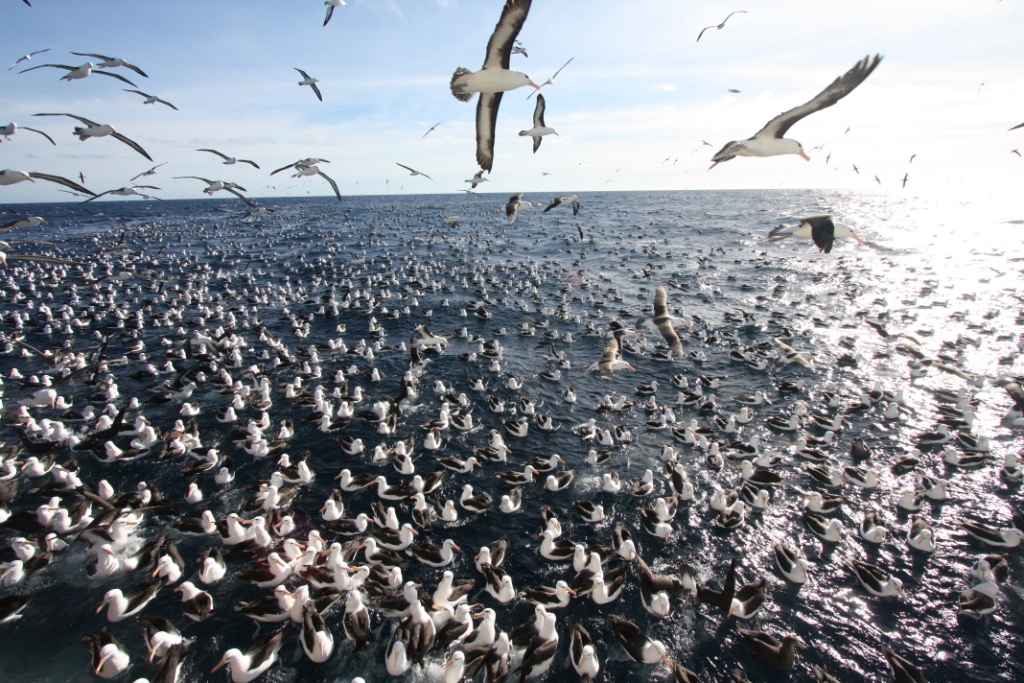
Discards anyone? Black-browed Albatrosses gather en masse behind a South Atlantic trawler; photograph by Graham Parker
Amanda Kuepfer (South Atlantic Environmental Research Institute) and colleagues have published in the ICES Journal of Marine Science on the impacts fishery discards are having on the natural foraging conditions for Black-browed Albatross Thalassarche melanophris populations breeding in the South Atlantic.
The paper’s abstract follows:
“Fishery discards supplement food for many seabirds, but the impacts of declining discards are poorly understood. Discards may be beneficial for some populations but have negative impacts by increasing bycatch risk or because they are junk-food. The Falkland Islands support > 70% of global black-browed albatross Thalassarche melanophris populations, which feed on discards. However, the effect of discards on population demographics, and implications of fishery management changes, are unknown. We analysed stomach contents of black-browed albatross chicks across eight breeding seasons (2004–2020) from New Island, Falkland Islands, to assess variation in discard consumption and how this relates to foraging conditions and breeding success. Across years, 68%–98% of samples contained natural prey, whilst 23%–88% of samples contained fishery discards. Discard consumption was positively related to fishery catches of hoki Macruronus magellanicus and sea surface temperature anomalies SSTA (°C), and negatively related to breeding success. These results suggest a diet-switching behaviour for Falkland Islands albatrosses, whereby birds switch from preferred natural prey to suboptimal discards when environmental conditions, and hence natural feeding opportunities, are unfavourable. Crucially, this study highlights that fishery discards do not compensate for poor natural foraging conditions for breeding albatrosses in the long term.”
With thanks to Amanda Kuepfer, South Atlantic Environmental Research Institute.
Reference:
Kuepfer, A., Votier, S.C., Sherley, R.B., Ventura, F., Matias, R., Anderson, O., Brickle, P., Arkhipkin, A. & Catry, P. 2022. Prey-switching to fishery discards does not compensate for poor natural foraging conditions in breeding albatross. ICES Journal of Marine Science doi.org/10.1093/icesjms/fsac069.
Bree Forrer, ACAP Communications Advisor & John Cooper, ACAP Information Officer, 12 May 2022

 Français
Français  English
English  Español
Español